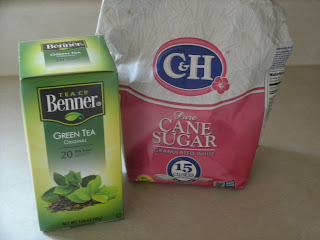Tanzania and Mozambique
Tanzania and Mozambique
Now we are moving on from southern Africa, up the eastern side of the continent. Today we are making Swahili ginger milk tea.Technically, I have been in Tanzania. In 2000 I studied abroad in Kenya, and part of the study abroad program was taking road trips to see the country. When we went to Masai Mara, we learned about the "no man's land" between the 2 countries to help accommodate the Masai tribe's nomadic lifestyle. It also helped tourists enjoy the park, and see all the sights since we had to drive into this area to go to the Sand River to see the hippos. So the border was not enforced until you were 5 kilometers into the country. If you were less than 5 kilometers in (from either direction) from the border, it was no big deal. I'm not sure that it was that way outside of the park (Masai Mara national park in Kenya, The Serengeti national park in Tanzania). The border was marked by a white pole in the ground with a K on one side, and a T on the other.
Tanzania was also part of "British East Africa". When colonial rule ended, this region was broken up into 5 different countries. There were 5 snow capped mountains in "British East Africa", so each country got one. Tanzania has the most famous one. Mount Kilimanjaro. It is actually made up of 3 volcanoes, and is visible from southern Kenya on clear days (so I hear). We weren't in the right place to see it. It is much further east from the Serengeti plain.
While I suspect that the generic black tea with milk and sugar is widely available, I found a great variation attributed to a camp at Mount Kilimanjaro. Ginger milk tea.
The instructions say to use a 2-3 inch piece of ginger, peeled and grated. I had dried ginger.
I simmered the dry ginger 20-25 minutes
Then sliced the ginger and steeped another 20 to 25 minutes.
I ended up with 2.5 cups (750 ml) of ginger tea. Then I brought this back to a boil, and added 1 teaspoon (2 grams) of black tea.
I simmered a few minutes, then added 1.5 cups (375 ml) milk and warmed through.
Then I strained it into a cup.
This drink has a gentle snap of ginger, a hint of tea, and the smoothness of milk. I chose this mug because rejected clothing from thrift stores in the US, and misprinted t-shirts (like the t-shirts printed ahead of time for the team that ultimately lost the Super Bowl), are shipped to Africa to be sold by vendors on the street. I remember seeing clothes carefully laid out on blankets. Never mind that people don't necessarily know what the graphics on the shirts mean, they just want something with a nice color and design at an affordable price.
When researching tea of Mozambique, this was one of the teas suggested. Mozambique is on the coast of the Indian Ocean right across from Madagascar, and just north of South Africa and Swaziland. It was a colony of Portugal, and "provided agricultural and mineral products to its distant ruler with few services in return". They gained their independence in 1975. The Great Rift Valley stretches into this region, and it is known for having many natural harbors. Colonial era plantations for tea, sugar, and other crops continue on as private plantations now, and their wildlife areas and white sand beaches are being developed for tourism. Mozambique also produced many important African writers and poets.








Yay for ginger!
ReplyDeleteYes. I have to say that I like the flavors and variety across Africa. My friend from China told me that a traditional remedy for cold hands and feet in China is to soak ginger in hot water, then soak your hands/feet in it. I haven't tried it, but I think I would need a bathtub full of ginger water in the winter.
Delete